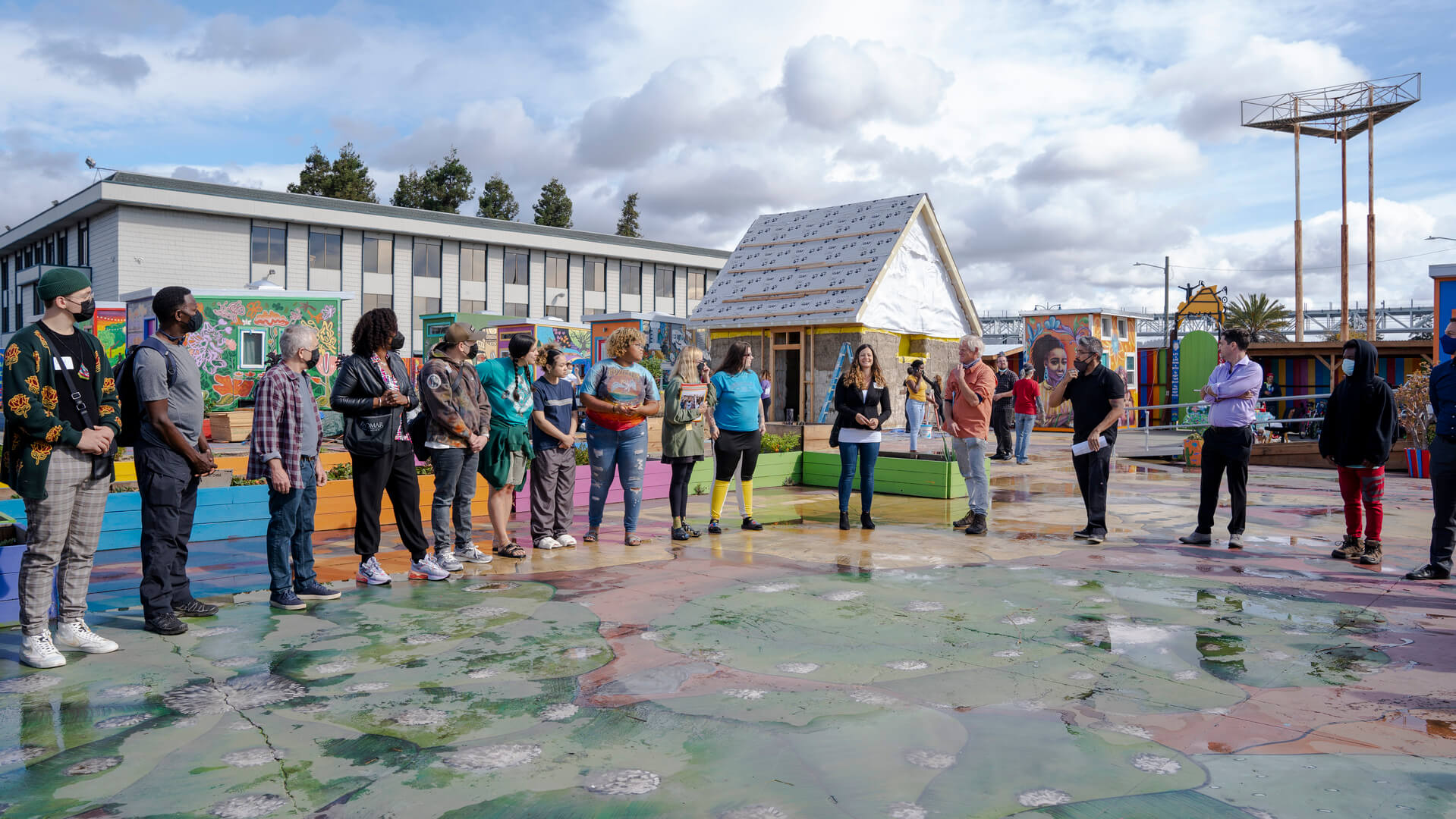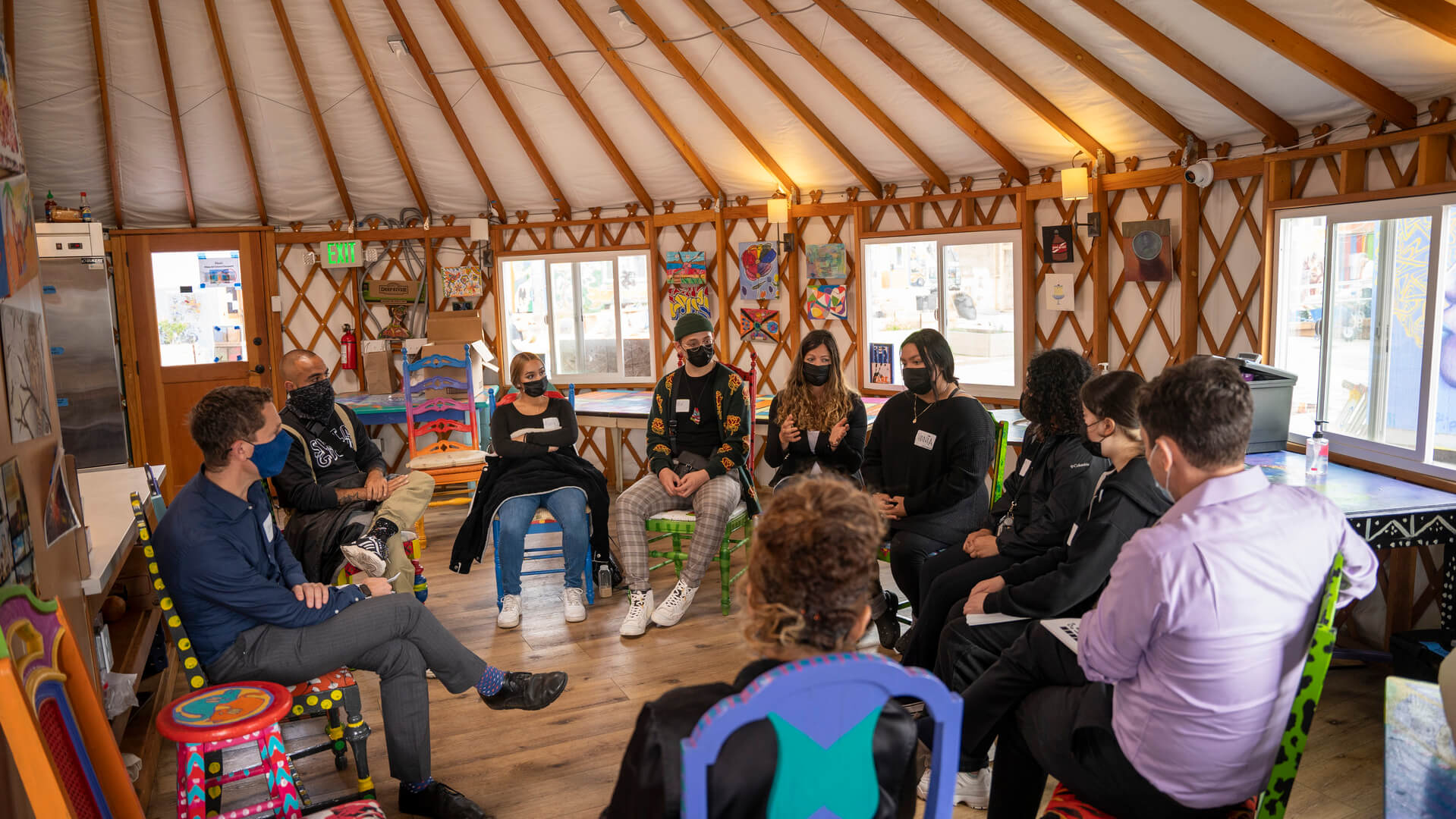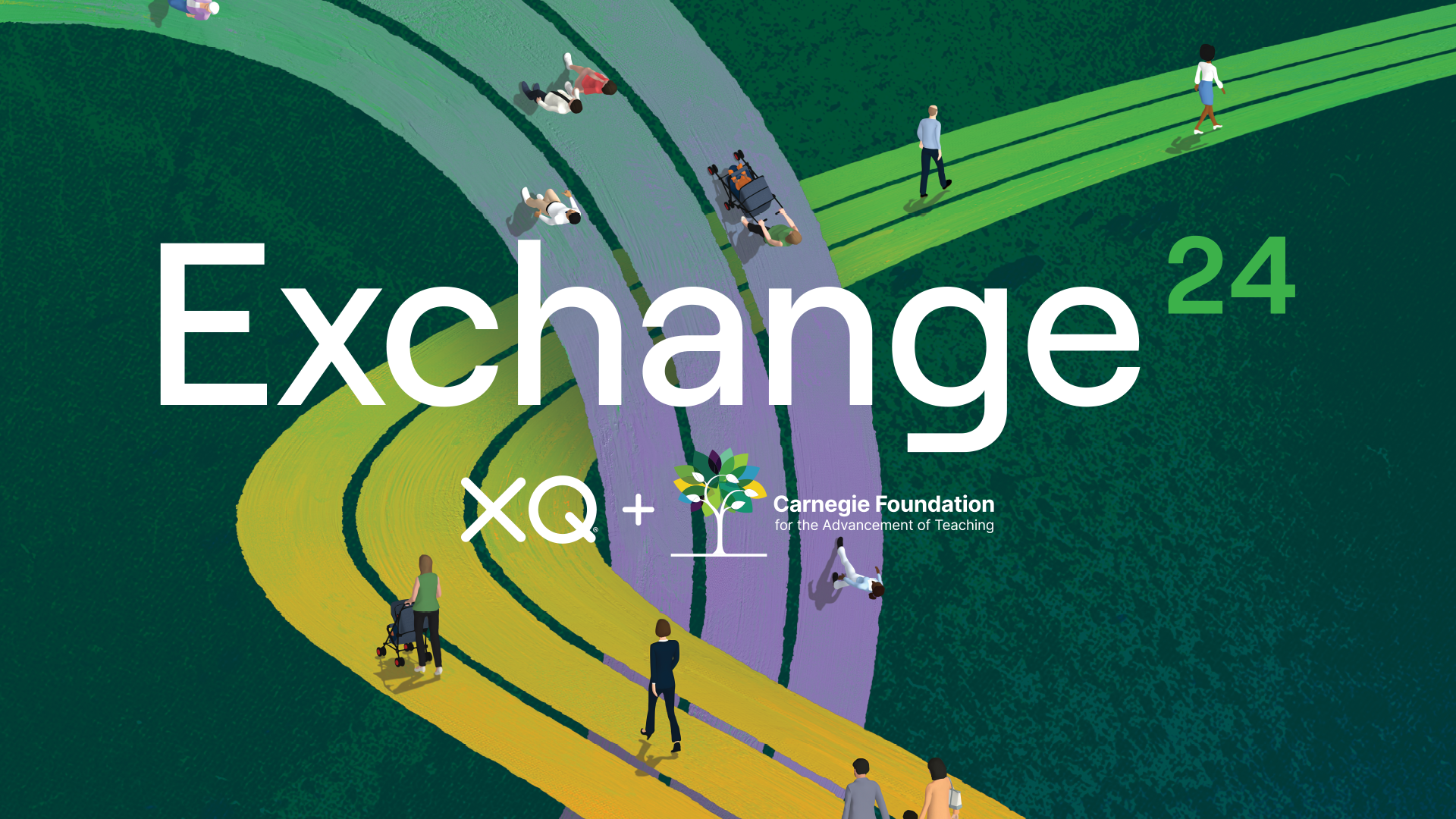How to Address Social Justice Topics that Interest High School Students
The San Francisco Bay Area is notorious for being one of the most expensive housing markets…

The San Francisco Bay Area is notorious for being one of the most expensive housing markets in the country. Its lack of affordable housing means more than 1,700 young people are experiencing homelessness each night in Alameda County.
Latitude High School, an XQ school in Oakland, a city in Alameda County, decided to research and address the problem as part of their place-based, project-based approach to high school. Physics teacher Regina Kruglyak asked her students to create plans for two new tiny houses, for a tiny house village in East Oakland that serves young people and was initiated by Youth Spirit Artworks. The teens interviewed designers, professionals working with homeless youth, and people in the tiny home community to understand the scope and needs of the project. After completing their sketches, students pitched them to the Youth Spirit Artworks board for feedback.
The project took longer than expected, due to the COVID-19 pandemic, but the teens said it gave their education a sense of purpose. As one student explained, “It felt like I was actually able to do something. It felt like we were doing something different, something that I cared about.”
Latitude High School was designed for students to learn through real-world, collaborative projects that connect them to their community. Meaningful, engaged learning is one of XQ’s Design Principles. The school also encourages its pupils to research many different angles of a problem in order to solve it—an XQ Learner Outcome we call original thinkers for an uncertain world. Teachers who can integrate social justice into their lessons also provide learners the opportunity to gain foundational knowledge about what makes a democracy function. It’s a valuable learner outcome that can help prepare young people for the future. Learning how to evaluate social systems allows them to identify complex problems society may face, and ideate pathways for support.
Honing in on a problem that affects people in Latitude’s surrounding community with the tiny house project is an example of rigorous academic learning that also tackles societal issues of justice and equity. By exploring the underlying causes of homelessness with their teachers, students gained a deeper understanding of the structures that shape the lives of people they see and know. The project empowered them to apply their academic skills and knowledge to take action and make a real difference.
What is Social Justice?
The preamble of the U.S. Constitution refers to forming a more perfect union that will “establish justice” along with the “blessings of liberty.” Social justice is a term for ensuring that happens: it means all people have full and equal access to resources, privileges, and opportunities in society. To pursue social justice efforts means to work for a fair, equitable society that values and meets the needs of all people. In some instances, this may also mean healing and restoring communities to improve their livelihoods.
Why Social Justice in Education Matters
Teaching about justice isn’t new in public education. Children learn about fairness in the classroom from a very early age through sharing, taking turns, and telling the truth. As kids get older, their high schools should embrace and deepen conversations about fairness because they play an important role in helping students gain the skills and knowledge to meet future challenges, and build the world in which they want to live. These are also the values behind all of the XQ Learner Outcomes—traits young adults need to succeed in a rapidly changing future: masters of all fundamental literacies, generous collaborators, holders of foundational knowledge, lifelong learners, and original thinkers for an uncertain world.
Examples of social justice can be used in all kinds of lessons to connect pupils to what’s going on inside and outside their schools. Like the tiny house project at Latitude, lessons that incorporate social justice train students to not only analyze real-world challenges and the situations that led to them, but also to come up with proactive solutions.
Exploring social justice topics also empowers students with the tools to advocate for themselves and their own goals. By engaging with them about the impact of social systems on their own lives, teachers can activate youth voice and choice and empower them to shape their own educational experiences. We also know that meaningful, engaged learning occurs when students have access to work that feels relevant to their own lives.

Examples of Social Justice Topics for the Classroom
The most meaningful social justice topics to explore in your classroom are the ones that matter most to your students and their communities.
With that in mind, we’ve gathered a list of possible social justice topics, with examples of how educators at XQ schools have integrated these topics successfully into their own classrooms.
Social Justice Issues Related to Education
Education systems not only impact the lives of students and their teachers, but they also have a tremendous impact on families and the health and well-being of their communities. Together, teachers and students can consider educational equity questions like:
- How is funding allocated in our district? Who gets what and why?
- How have historical patterns of segregation in education impacted our current school demographics?
- Does our school support all learners’ needs? If not, how can we ensure that it does?
At Elizabethton High School, an XQ school in Elizabethton, Tennessee, educators and administrators work to involve pupils in high-level discussions about school structure. This held true when the district received American Rescue Plan funding in the wake of COVID-19. After participating in a school-wide survey about how the funds should be implemented, two Elizabethton seniors wanted their voices to make a bigger impact. They worked with their principal and superintendent to advocate for changes such as increased investment in student mental health supports, like better access to counselors. Almost all of their proposed changes were adopted, ensuring that the funding truly meets all learners’ needs.
Social Justice Topics Related to the Environment
While many social justice topics focus on societal structure, teachers can also explore environmental justice with their pupils, allowing them to broaden their interests by focusing on local ecologies and habitats. As Yale Climate Connections describes, environmental justice means understanding the social impacts of climate change, through questions like:
- How does climate change impact groups of people differently?
- How can the impacts of climate change exacerbate current inequities?
- How do we see the impacts of climate change impacting different groups of people in our community?
In New Orleans, Louisiana, students at the XQ school New Harmony High explored climate justice through storytelling in a project with a community nonprofit, 826 New Orleans. The teens created a collection of stories imagining a future New Orleans impacted by unchecked climate change. A teacher said they did this by thinking about everything their city has contributed to the world, like jazz and local foods, and then talking about the threats they face. One student wrote about the loss of gumbo due to a mass extinction of seafood. The protagonist had to scour the city for the vanished gumbo recipes to save a hallowed aspect of New Orleans culture. Another student envisioned the city as a sort of “Waterworld” nightmare, with anarchy and rampant crime as civilization crumbles.
This project gave students an opportunity to work on their storytelling skills while applying academic learning from other courses—such as the science of climate change—to create a project which also served the community by celebrating and preserving different aspects of New Orleans culture.
Social Justice Topics Related to Food Justice
Students and teachers can apply a social justice framework to thinking about food justice, with questions like:
- What disparities in access to nutritious food exist in our community?
- How do issues of land ownership impact access to food?
- How can we guarantee access to quality food for all people?
At Furr High School, an XQ school in Houston, Texas, students combat food insecurity by learning about sustanaible agricultural practices through a specialized technical pathway. The agricultural program currently enrolls over 500 students, with the curriculum centering on food sovereignty (the right to healthy food) and natural resources. To support community outreach, the program established the Herman Brown Park Community Garden in 2016. A working lab and outdoor classroom, the garden allows students to work with peers, teachers, and community volunteers. Educators intend to expand the garden to accommodate the high student interest, incorporate livestock, and provide more space for community involvement.
At Círculos, an XQ school in Santa Ana, CA, students Ana and Jade took on questions questions of food insecurity through a documentary film project. Ana explained, “Growing up in Santa Ana, I’ve seen the struggles of the low-income communities and how they manage to access food, especially healthy food. Usually, these communities are prey for fast food companies and the prices are targeted for them. It made me sad and I wanted to see how this issue could be solved.” Ana and Jade examined and analyzed these issues in their documentary, and launched a community gardening club at the school to be part of the solution.
How to Explore Social Justice Topics in The Classroom
Teachers who want to explore social justice issues in the classroom should keep in mind that, for students, these topics are nothing new. Students see social justice topics play out in their day-to-day lives, even if they lack a framework for fully understanding these issues.
With this in mind, exploring social justice issues in the classroom means making space for young adults to bring their lived experiences and real-life concerns into the classroom—and connecting these experiences and concerns to rigorous, authentic learning opportunities. Teachers can play a role by encouraging a respectful conversation where students feel safe expressing themselves, while also ensuring they cite examples not just opinions.
High School Students Are Increasingly Aware of Social Justice Issues
In movements for social justice across the nation, high school students are often among those leading the charge. Take the Oakland high school students creating murals for Black Lives Matter, or climate activist Jerome Foster, a graduate of XQ school Washington Leadership Academy who founded the youth-led non-profit, One Million of Us. Even students who are not actively involved in social justice issues bring awareness of these topics from their lived experiences as teens, family members, and community members.
Teachers can invite these perspectives into the classroom by using culturally responsive, student-centered teaching practices. In culturally responsive teaching, teachers connect what the class is learning to students’ cultural knowledge and lived experiences in a way that is meaningful and engaged. For example, a history class on Julius Caesar can incorporate themes of betrayal—using modern examples familiar to students—to make the political battles in ancient Rome feel more relatable. Teachers can also put quotes on their walls from a diverse range of leaders, so learners from different backgrounds feel invited and represented.
This is what it means to be culturally-responsive: knowing more about your students and where they’re coming from, and then acknowledging that in the classroom. This can also be done through student-centered learning—giving students a say in what, when, and how they learn. Teachers can use these methods to explore social justice issues in the classroom by:
- Giving students choice and autonomy
- Inviting students to share and learn from each others’ experiences
- Connecting students with community partners devoted to issues they’re passionate about
Exploring Social Justice Issues Through Project-Based Learning
Social justice learning is most powerful when students have the opportunity to take action based on what they’ve learned to promote a change in their community. As the examples cited above illustrate, one of the best ways to enable this is through project-based learning: designing projects around issues that matter most fo their students. PBL expert John Larmer explains: “In an authentic project, students see the application very clearly; ‘we’re learning this because we need it to accomplish this important task or answer this meaningful question.’ This gives them a more powerful, intrinsic motivation to learn.”
For another example of a project that explore social justice issues while also supporting academic competencies, explore how XQ school Iowa BIG’s students addressed gun violence through a community-building documentary project.
Where to Find More Teacher Resources for Social Justice
Teachers can also keep exploring how to incorporate social justice in their lessons with these resources from XQ and others, including:
- Equity in the High School Classroom: A Teacher’s Guide
- Computer Science Through a Lens of Equity & Social Justice
- Sharif El-Mekki on Hiring Practices
- Beyond MLK Day and Black History Month: The Approach at RISE High
- What Are Restorative Justice Circles, and When Can They be Utilized?
- Learning for Justice
- ADL Education
- Diversity Council Resources for Schools and Universities
- Do Something
- GLSEN Educator Resources
- NEA Racial and Social Justice resources
- AFT Classroom Resources to Teach About Civil Rights and Social Justice
Top Photo by Angela Soria









